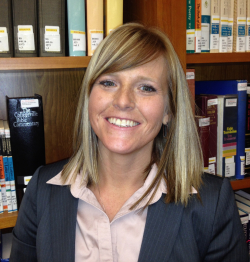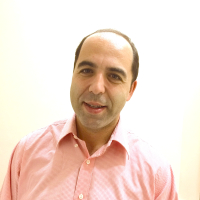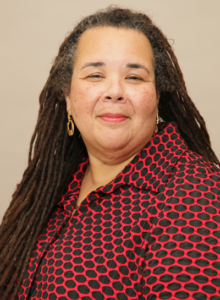anti-racism
Select an item by clicking its checkbox
Countless hate crimes since Election Day already show the widespread effect of the President-Elect’s unpredictable nature and his death-inducing ideologies: racism, islamophobia, heteropatriarchy, xenophobia, anti-Semitism. What do we as higher educators do when our global context is unstable, the future is uncertain, and the local context is even dangerous ...
In the quest for understanding the dynamics of Muslim societies, understanding Islam is not always the key. This was the theme of my last post on Islam and Decolonization. I would like to offer more thoughts on a related topic: racism, or at least racial and ethnic prejudice, in the ...

Integrating Mindfulness into Anti-Oppression Pedagogy: Social Justice in Higher Education
Date Reviewed: April 15, 2016
In the classroom, faculty often rely on a singular way of knowing -- allowing minds to enter the classroom while leaving bodies, spirits, emotions, and experiences outside the doors of the lecture hall or meeting space. Professor of ethnic and women’s studies at St. Cloud State University, Beth Berila imagines something more effective and embodied. After receiving tenure, she enrolled in a yoga teacher training program. She realized the contemplative practices of yoga and meditation could better her teaching, particularly in the area of social justice. Mindfulness could create a space for interrupting oppression and begin “the dynamic process of unlearning” that which may contribute to oppression (x). In each of seven chapters, Berila presents a theoretical framework, reflection and application for classroom learning, practices to cultivate mindfulness, and extensive bibliographic references.
Berila’s project aims to recognize oppression and unlearn its destructive internalization for both the oppressed and the oppressor. Mindfulness, Berila argues, can dismantle privilege as well as dislodge internalized oppression. The practices she incorporates into her teaching prompts readers to reflect on their own educational techniques as potentially contemplative and communal spaces for learning. She offers introspective activities like pranayama (a form of breathing), journaling, and mindful awareness of the body. She also offers corporate activities that invite interaction and group discussion. Through both the introverted and extroverted approaches she acknowledges the possibility of triggering dissonance, trauma, and resistance. Berila is a skilled teacher and astute author; she knows well the risk and rewards of the activities she engages. The practices she advocates are new, thought-provoking, and stimulating.
Berila is not unaware of the critiques that can be made of pedagogy shaped by mindfulness. She addresses particular concerns directly and then nudges the critics to consider the positive benefits of this method: building empowered communities, fostering compassion, changing oppressive systems, claiming full human dignity and equality for all people, and prompting institutional change. Accomplishing this requires attention to the knee-jerk reaction of shenpa, the Buddhist term for “the negative gut reaction” (109) behind our charged reactions. Disrupting that shenpa is one of the aims of mindfulness and here Berila offers techniques for navigating the complexity of reactions that can occur within individuals and classrooms when that charge occurs.
Integrating Mindfulness into Anti-Oppression Pedagogy would be great summer or sabbatical reading when time allows deep contemplation. Her work invites reflection on those moments we wish we had handled differently in the classroom while offering helpful steps forward for future instruction. While integrating mindfulness does not require a teacher to be a master practitioner, Berila prompts small steps we can all take toward integrating body and spirit, emotion and experience into a deeper embodiment that moves beyond our mechanized minds. Plan to read this fascinating book twice. Once in a time and space where you can “pause and breathe” (29), allowing the content to become embodied. And then second, with pen in hand and syllabus in the other, ready to take note of how to incorporate these practices into your next semester of teaching.

Critical Race Theory in Higher Education: 20 Years of Theoretical and Research Innovations
Date Reviewed: April 15, 2016
Critical Race Theory in Higher Education: 20 Years of Theoretical and Research Innovations is an in-depth description and analysis of critical race theory. The book addresses contemporary issues facing our society in general and higher education specifically. Dorian L. McCoy, a professor at the University of Tennessee and Dirk. J. Rodricks, a doctoral student at the University of Toronto collaborated on the book. It is part of the Higher Education Report periodical series.
It is interesting that this book was launched during some disturbing times involving race in the United States. The book addresses critical race theory at the time when the slogan “Black Lives Matter” becomes the rallying cry against injustice and the attacks on black lives by the criminal justice system and police specifically. Although the book addresses this issue, it is not what propelled the authors to write it.
The authors define critical race theory (CRT) as:
"A form of oppositional scholarship that centers race and racism while challenging the Eurocentric values established as the accepted norm in the United States; is used to examine the unequal and unjust distribution of power and resources politically, economically, racially, and socially; a movement of scholars committed to challenging and disrupting racism and other forms of oppression; composed of the following key tenets: the permanence of racism, experiential knowledge, interest convergence theory, intersectionality, whiteness of property, the critique of liberalism, and commitment to social justice." (91)
Throughout the book the authors take their definition of critical race theory and present research on each aspect of it. This not only serves to educate students in higher education, but also to enlighten those who are part of the hiring process.
As one who has served on search committees at institutions of higher education, I find the research in this book to be very stimulating. The documented disproportionate number of professors of color teaching in institutions of higher education makes this research very helpful for search committees in these institutions. Astute people will use this information to further promote equality and even the playing ground in institutions of higher education.
Critical Race Theory in Higher Education serves as an educational tool for administrators, board of trustee members, and faculty in higher education, especially for the ways by which it encourages deeper reflection on the subject.
The weakness from this reviewer’s viewpoint is that the book becomes somewhat overwhelming with so many references. This sometimes causes the flow of reading to be cumbersome particularly when reading some technical terms. That said, McCoy and Rodricks have put together a large corpus of research on critical race theory that could be helpful to faculty teaching in North American contexts. The book is very timely as it explores a very important subject to address in our present time of heightened awareness of multiculturalism and pluralism. Overall this book is a valuable resource for all who have an interest in higher education.
My father, Lloyd R. Westfield, spent the majority of his career as a school psychologist with the Philadelphia public school system. He loved his job, and by many accounts, he was very good at his job. I have vivid memories of him, one summer, as an adjunct professor for Temple ...


